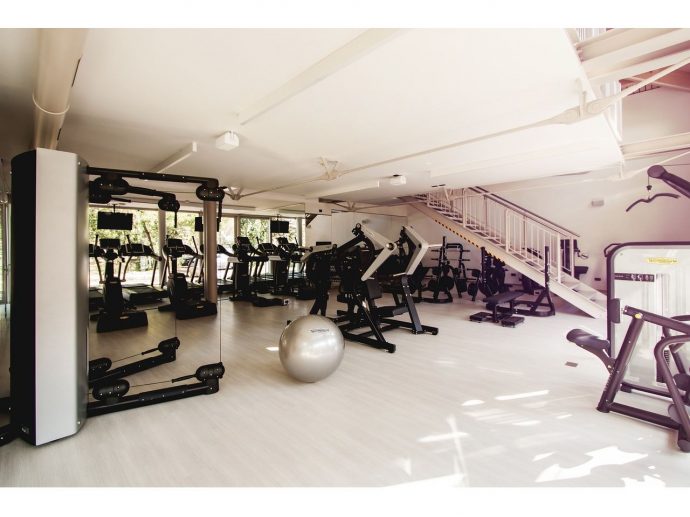Categories more
- Adventures (17)
- Arts / Collectables (15)
- Automotive (37)
- Aviation (11)
- Bath, Body, & Health (77)
- Children (6)
- Cigars / Spirits (32)
- Cuisine (16)
- Design/Architecture (22)
- Electronics (13)
- Entertainment (4)
- Event Planning (5)
- Fashion (46)
- Finance (9)
- Gifts / Misc (6)
- Home Decor (45)
- Jewelry (41)
- Pets (3)
- Philanthropy (1)
- Real Estate (16)
- Services (23)
- Sports / Golf (14)
- Vacation / Travel (60)
- Watches / Pens (15)
- Wines / Vines (24)
- Yachting / Boating (17)
Safety First: Reducing Injury Risk with Proper Gym Flooring
Published
05/23/2024Safety should always be a top priority in any gym environment. While proper form and technique are crucial for injury prevention, the role of gym flooring often goes overlooked. In this article, we'll delve into the importance of investing in quality gym flooring to reduce the risk of injuries during workouts. From shock absorption to slip resistance, the right flooring can make a significant difference in creating a safe and supportive workout space.
The Impact of Gym Flooring on Injury Prevention
Gym flooring plays a critical role in mitigating the impact of high-intensity workouts on the body. Proper flooring absorbs shock and reduces the strain on joints, muscles, and ligaments, minimizing the risk of impact-related injuries such as sprains, strains, and stress fractures. Additionally, quality flooring provides a stable surface for exercises like weightlifting and plyometrics, enhancing balance and reducing the likelihood of slips or falls.
Choosing the Right Flooring Material
When selecting gym flooring, it's essential to consider the specific needs and requirements of your workout space. There are various flooring materials available, each with its own set of benefits and considerations. Options range from rubber gym flooring and foam to vinyl and carpet tiles, each offering unique properties such as durability, cushioning, and ease of maintenance. By choosing the right flooring material for your gym, you can create a safe and comfortable environment for all types of workouts.
Shock Absorption and Impact Protection
One of the primary functions of gym flooring is to absorb shock and impact during exercises. High-quality flooring materials, such as rubber or foam, excel in cushioning the body against the force of heavy weights or high-impact movements. This shock absorption not only reduces the risk of acute injuries but also minimizes the wear and tear on joints over time, promoting long-term joint health and injury prevention.
Slip Resistance and Stability
In addition to shock absorption, slip resistance is another crucial factor to consider when choosing gym flooring. Slippery surfaces can pose a significant hazard, particularly during dynamic or fast-paced exercises. High-quality gym flooring materials feature textured surfaces or non-slip coatings that provide traction and stability, reducing the risk of slips and falls even in humid or sweaty conditions. This slip resistance is especially important in areas prone to moisture, such as locker rooms or poolside gyms.
Durability and Longevity
Investing in durable gym flooring is essential for maintaining a safe and functional workout space over time. High-traffic areas, heavy equipment, and repetitive movements can take a toll on flooring surfaces, leading to premature wear and tear if not properly constructed. Quality gym flooring materials are designed to withstand the rigors of daily use, resisting scratches, scuffs, and indentation from dropped weights or equipment movement. By choosing durable flooring options, gym owners can ensure their investment lasts for years to come while providing a safe environment for patrons.
Maintenance and Hygiene
Finally, proper maintenance and hygiene are essential aspects of gym flooring safety. Regular cleaning and sanitization help prevent the buildup of dirt, sweat, and bacteria, reducing the risk of slips and promoting overall hygiene in the gym environment. Many gym flooring materials are designed to be easy to clean and maintain, requiring simple sweeping, mopping, or vacuuming to keep them in optimal condition.
Creating a Safe and Supportive Workout Environment
In conclusion, gym flooring plays a critical role in reducing the risk of injuries and creating a safe and supportive workout environment. From shock absorption to slip resistance, the right flooring material can make a significant difference in promoting injury prevention and long-term joint health. By investing in quality gym flooring that prioritizes safety and functionality, gym owners can ensure their facility provides a safe and enjoyable experience for all patrons, enhancing overall fitness and well-being.















